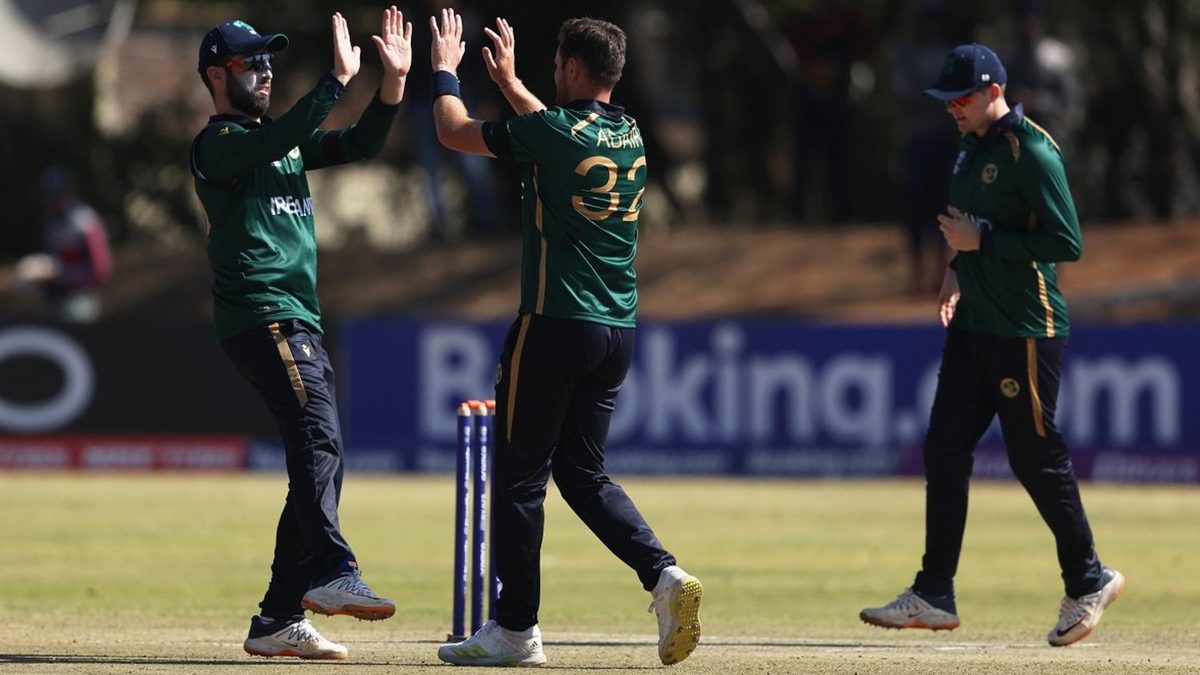
Having lost both their matches, Ireland stand on the brink of elimination from the World Cup 2023 Qualifiers. However, there is still hope.
Subscribe to the Wisden Cricket YouTube channel for post-match analysis, player interviews, and much more.
Ireland beat Pakistan and Bangladesh at their maiden World Cup appearance in 2007. In 2011, they beat England. In 2015, the West Indies and Zimbabwe.
Then, after felling five Full Members across three editions, they did not qualify for the 2019 edition, as the ICC had restricted the contest to 10 teams. Ironically, it was the first World Cup since Ireland were elevated to Full Membership by the ICC.
Yet again, Ireland have to play in the Qualifiers, from which two teams will qualify for the main event, to be hosted by India later this year. It will not be easy, for Sri Lanka, the West Indies, and hosts Zimbabwe are all battling it out, not to speak of the six Associate Nations.
Since three teams qualify from each group for the Super Sixes, Ireland should not have found themselves in a struggling position. Sri Lanka, of course, entered the tournament as favourites to qualify for the next stage, but Ireland were expected to win two of their matches against Scotland, Oman, or the UAE.
Unfortunately, things have not gone Ireland’s way. They made 281-7 in their first match, but had little impact on Oman, who chased down the target with nine balls to spare.
In their next match, they made 286-8, and kept Scotland at bay until the last ball – slight improvements, one may say – but that was it. With no points after two matches – the same as the UAE – Ireland are on the verge of elimination.
Having won all their matches, Oman (two wins), Sri Lanka (one), and Scotland (one) occupy the top three spots. All three also (obviously) have net run rates in the positive, well clear of Ireland (-0.177) and the UAE (-2.003).
But while Ireland’s situation seems to border on the hopeless, they can still make it.
How can Ireland make it to the World Cup Qualifiers Super Sixes?
Sri Lanka thrashed the UAE by 175 runs, and have a net run rate of +3.5. Combining that with their strength, perhaps it is fair to assume that they will qualify for the Super Sixes.
With a net run rate of +0.368, Oman are likely to stay clear of Ireland’s -0.177 as well (both sides are yet to play Sri Lanka). In other words, even if Ireland win both their matches and Oman lose theirs, Oman may finish above Ireland.
If both the above events take place, Ireland have to finish above Scotland. For that, winning both matches – including one against Sri Lanka – will not be enough.
To be on the safe side, Ireland need to beat Sri Lanka and the UAE (they play them in that order).
If Ireland lose to Sri Lanka but beat the UAE, they will qualify if and only if Scotland lose to the UAE and Oman and Sri Lanka; and Ireland finish above both Scotland and the UAE on net run rate.
If Ireland lose to the UAE but beat Sri Lanka, they will be in a precarious position, for the winner of UAE versus Scotland will then finish above Ireland with four points.
In that case, Ireland will have to back themselves to go past at least one of Sri Lanka and Oman – a scenario that, given the current situation, seems bleak.
However, Ireland may not qualify even if they win both matches, for that will put them on four points. Sri Lanka’s outstanding net run rate means that a win against Oman or Scotland will almost certainly put them clear of Ireland. And as we have discussed above, Oman are likely to pip Ireland too.
Ireland will then have to expect Scotland to lose all three matches. That will put both Scotland and the UAE on two points each, behind Ireland.
If Scotland win one match, Ireland are more likely than Scotland to qualify. Both teams play their last matches at the same time on the same day, but Scotland play Sri Lanka, while Ireland face the UAE.
However, if Scotland win two of their remaining matches and Sri Lanka and Oman both finish above Ireland, the Irish will not make it to the Super Sixes.








